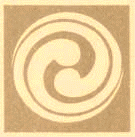| |||||
|
| Reservations | Contents |
|
Old HaikuWhy so scrawny, cat?  The word haiku (plural: haiku) comes from Japan. It is an unrhymed verse form of Japanese origin, and hokku is an alternative name. Haiku poems have only three lines and may read very much like telegrams. The lines usually contain 5, 7, and 5 syllables respectively - 17 Japanese syllables in all. Being cast in this briefing form, a haiku poem generally contains a seasonal reference. And a tanka poem, from which the haiku form first derived as its three opening lines, contains two more lines of 7 syllables each, i.e. 31 syllables in all. (Merriam-Webster's Dictionary) Compare: "In periods when the culture values artificiality, the lyric becomes stereotyped. Then, after a while, the poets revolt and, usually turning to folk origins, restore to lyric poetry at least the appearance of naturalness and spontaneity." (EB, "literature")
Old haiku poems help some of us to open up to certain fine and perhaps basic enough ways of seeing or presenting things. Haiku poems involves ways of looking at things. And Zen Buddhist philosophy is into parts of it. The capacity to open up and remain receptive and perhaps advance into further possibilities through ascended inner perceptions of oneself in unison with nature; in one's circumstances of life; and among many common purposes, could bear on one's willingness to see and listen as well. In handed-over haiku one might try to penetrate to some fundamental wisdom or axiom. To do so, it helps some to know just how a haiku poem is built up, and what are the main images or symbols made use of in similar contexts (settings). The old poem variant can seek to describe an aspect of natural things or eternity portrayed through nature symbols and images, as paired with human scenes. What happens when the different planes of references blend, fairly often calls forth sound interest.
Most haiku poems make do with 3 lines, and the traditional, Japanese poetic form consists of 17 syllables arranged in three lines of 5, 7, and 5 syllables each. It should be good to feel flexible about it. Besides, a poem that is intended to amuse for a moment rather than last for all time, is not bad either. The British author Reginald Horace Blyth wrote six volumes on haiku between 1963 and 1977. Here is a haiku that Blyth liked: Heh heh heh, heh heh heh.
The hehs are spread over six lines in Arne Dørumsgaard's translation, if it matters. The original, Japanese poem was made right after a party guest farted. It is in the Norwegian artist Arne Dörumsgaard's little book Om å gjendikte kinesisk poesi [About Re-creating Chinese Poetry] (1970).
In the book he reveals how he set about translating a great many poems from the Far East's poetry and lore without knowing the languages that most of them were made in. Instead he relied on translations that were well received by critics, and came up with well over twenty volumes of re-creations - and got two Norwegian literature prices and was made a honorary doctor at a university in Taiwan eventually [Norsk Wikipedia, "Arne Dørumsgaard"]. Dørumsgaard devoted a book in a series to Basho - his background (ca. 120 pages) and a selection of Basho haiku. The title of the book is Fra duggens verden [From the Dew's World] (1985). Also, Paal Helge Haugen has translated an anthology of haiku poems in a very good book, Blad frå ein austleg hage: hundre Haiku-dikt [Leaves from an Eastern Garden: A Hundred Haiku] (1965). Peter Beilenson's Japanese Haiku (1955) and Japanese Verse (2009) translated by Geoffrey Bownas and Anthony Thwaite are among the English translations. Originally, the [Haiku] form was restricted in subject matter to an objective description of nature suggestive of one of the seasons, evoking a definite, though unstated, emotional response. Later its subject range was broadened, but it remained an art of expressing much and suggesting more in the fewest possible words. [EB "haiku"] Four renowned haiku poets:
Each is presented on his own page in this series. One may find deep meanings in some of their poem, or glimpses of moments "translated" into a few words, not unlike stenographed notes. The aim of the "the simple pattern", or poem, is to suggest a picture-formed observation. |
|
Beilenson, Peter, tr. 1955. Japanese Haiku. New York: Peter Pauper Press, 1955. Blyth, Reginald Horace. 1949. Haiku Vol 1: Eastern Culture. Tokyo: Hokuseido. Blyth, Reginald Horace. 1950. Haiku Vol 2: Spring. Tokyo: Hokuseido. Blyth, Reginald Horace. 1952. Haiku Vol 3: Summer–Autumn. Tokyo: Hokuseido. Blyth, Reginald Horace. 1952. Haiku Vol 4: Autumn–Winter. Tokyo: Hokuseido. Bownas, Geoffrey and Thwaite, Anthony. 2009. Japanese Verse. Rev. ed. London: Penguin Classics. Dørumsgaard, Arne: 1970. Om å gjendikte kinesisk poesi. Oslo: Dreyer, 1970. Dørumsgaard, Arne. 1985. Fra duggens verden. Basho i norsk gjendiktning (1644-1694). Oslo: Dreyer. EB: Encyclopaedia Britannica - i.e., Britannica Online.
Haugen, Paal-Helge. 1965. Blad frå ein austleg hage: hundre Haiku-dikt. Oslo: Det norske Samlaget.
|
| Section | Set |
 |
User's Guide ᴥ Disclaimer © 1996–2018, Tormod Kinnes, MPhil [Email] |